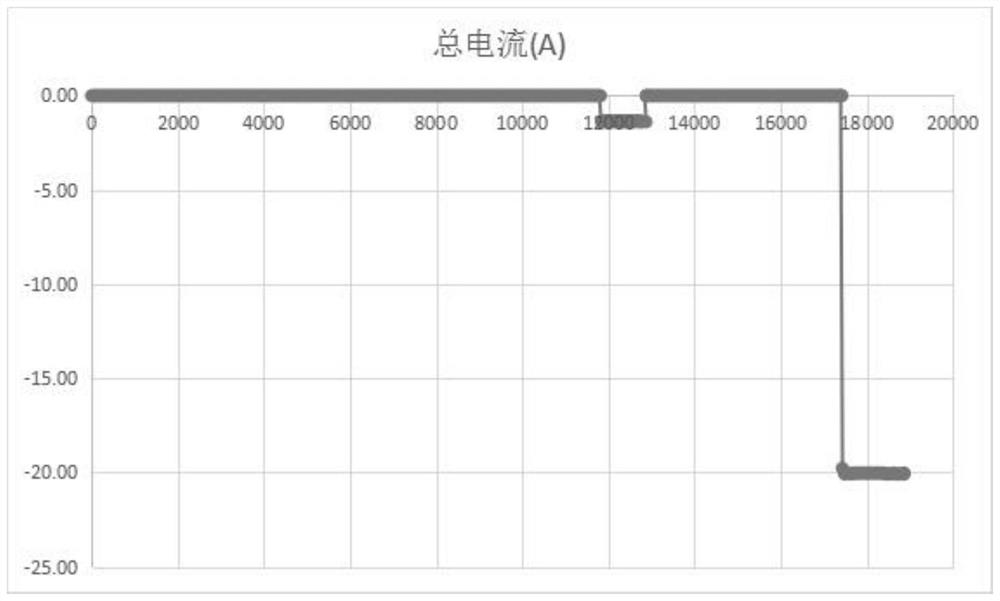Temperature control method of low-temperature lithium battery heating device
A temperature control method and low-temperature lithium battery technology, applied in secondary batteries, circuits, electrical components, etc., can solve the problems of poor temperature control effect and energy saving effect, achieve good customer experience, prolong the service cycle life, prolong Effects on service life and safety
- Summary
- Abstract
- Description
- Claims
- Application Information
AI Technical Summary
Problems solved by technology
Method used
Image
Examples
specific Embodiment 1
[0051] Specific embodiment 1: lithium iron phosphate battery
[0052] 1. When charging the battery
[0053] 1. When the battery is placed in the battery exchange cabinet, when the temperature of the battery core is > 0°C, there is no need to start the heating device;
[0054] 2. When the battery is placed in the battery exchange cabinet, when the temperature of the battery core is ≤0°C, the heating device needs to be started first, and when the temperature of the battery is >7±6°C, stop the heating.
[0055] 2. When the battery is discharged
[0056] 1. When the battery is static or discharged, the average temperature of the battery cell is ≤-5±5°C, and the remaining battery capacity is ≥35%, and the minimum voltage of the single string is >3250mv, the heating device is activated;
[0057] 2. When the battery is static or discharged, the average temperature of the battery cell is ≥7±6°C or the highest cell temperature is ≥15±5°C, or when the battery SOC is less than 30% or t...
specific Embodiment 2
[0058] Specific embodiment 2: Lithium manganate battery
[0059] 1. When charging the battery
[0060] 1. When the battery is placed in the battery exchange cabinet, when the temperature of the battery core is > 0°C, there is no need to start the heating device;
[0061] 2. When the battery is placed in the battery exchange cabinet, when the temperature of the battery core is ≤0°C, the heating device needs to be started first, and when the temperature of the battery is greater than 7±6°C, stop heating;
[0062] 2. When the battery is discharged
[0063] 1. When the battery is static or discharged, the average temperature of the battery cell is ≤-5±5°C, and the remaining battery capacity is ≥35%, and the minimum voltage of the single string is >3850mv, the heating device is activated;
[0064] 2. When the battery is static or discharged, the average temperature of the battery cell is ≥7±6°C or the highest cell temperature is ≥15±5°C, or when the battery SOC is less than 30% o...
specific Embodiment 3
[0065] Specific embodiment 3: ternary battery
[0066] 1. When charging the battery
[0067] 1. When the battery is placed in the battery exchange cabinet, when the temperature of the battery core is > 0°C, there is no need to start the heating device;
[0068] 2. When the battery is placed in the battery exchange cabinet, when the temperature of the battery core is ≤0°C, the heating device needs to be started first, and when the temperature of the battery is greater than 7±6°C, stop heating;
[0069] 2. When the battery is discharged
[0070] 1. When the battery is static or discharged, the average temperature of the battery cell is ≤-5±5°C, and the remaining battery capacity is ≥35%, and the minimum voltage of the single string is >3700mv, the heating device is activated;
[0071] 2. When the battery is static or discharged, the average temperature of the battery cell is ≥7±6°C or the highest cell temperature is ≥15±5°C, or when the battery SOC is less than 30% or the lowest...
PUM
 Login to View More
Login to View More Abstract
Description
Claims
Application Information
 Login to View More
Login to View More - R&D
- Intellectual Property
- Life Sciences
- Materials
- Tech Scout
- Unparalleled Data Quality
- Higher Quality Content
- 60% Fewer Hallucinations
Browse by: Latest US Patents, China's latest patents, Technical Efficacy Thesaurus, Application Domain, Technology Topic, Popular Technical Reports.
© 2025 PatSnap. All rights reserved.Legal|Privacy policy|Modern Slavery Act Transparency Statement|Sitemap|About US| Contact US: help@patsnap.com



